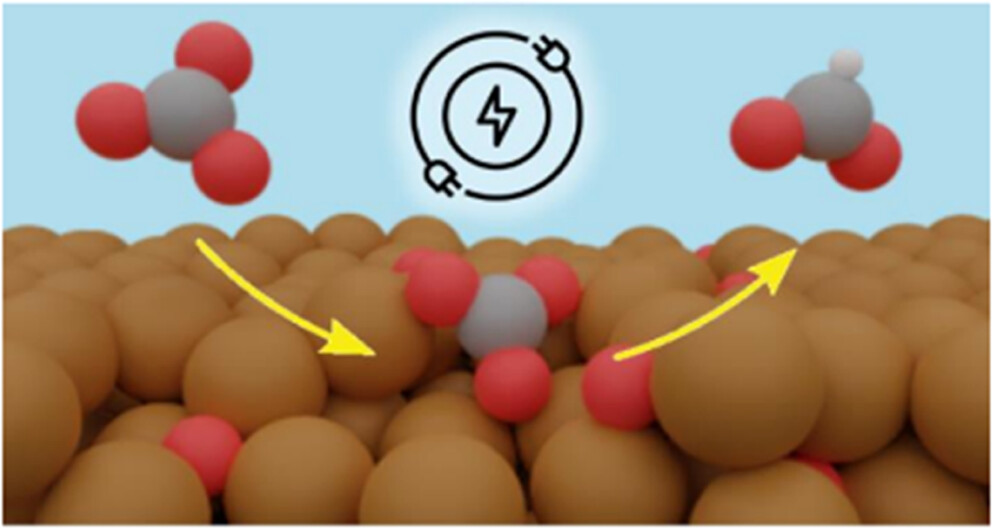A cause of losses in energy and carbon conversion efficiencies during the electrochemical CO2 reduction reaction (eCO2RR) can be attributed to the formation of carbonates (CO32–), which is generally considered to be an electrochemically inert species. Herein, using in situ Raman spectroscopy, liquid chromatography, 1H nuclear magnetic resonance spectroscopy, 13C and deuterium isotope labeling, and density functional theory simulations, we show that carbonate intermediates are adsorbed on a copper electrode during eCO2RR in KHCO3 electrolyte from 0.2 to −1.0 VRHE. These intermediates can be reduced to formate at −0.4 VRHE and more negative potentials. This finding is supported by our observation of formate from the reduction of Cu2(CO3)(OH)2. Pulse electrolysis on a copper electrode immersed in a N2-purged K2CO3 electrolyte was also performed. We found that the carbonate anions therein could be first adsorbed at −0.05 VRHE and then directly reduced to formate at −0.5 VRHE (overpotential of 0.28 V) with a Faradaic efficiency of 0.61%. The nature of the active sites generating the adsorbed carbonate species and the mechanism for the pulse-enabled reduction of carbonate to formate were elucidated. Our findings reveal how carbonates are directly reduced to a high-value product such as formate and open a potential pathway to mitigate carbonate formation during eCO2RR.
